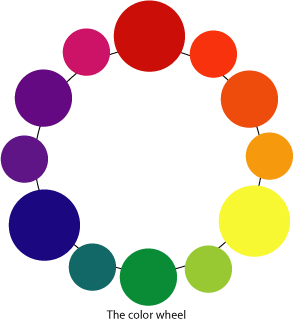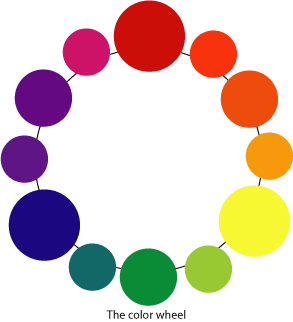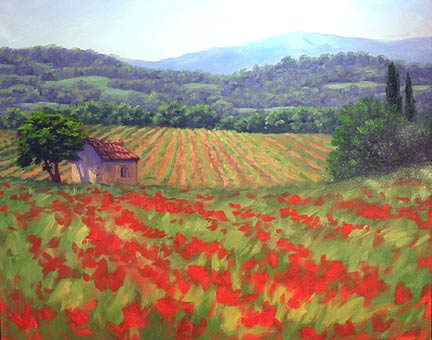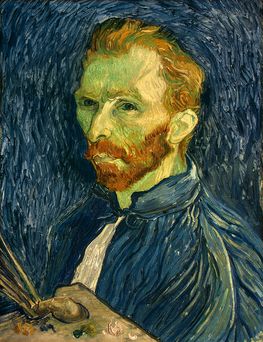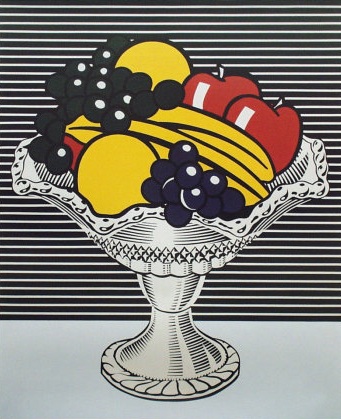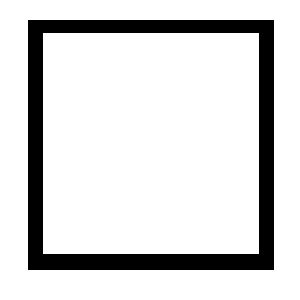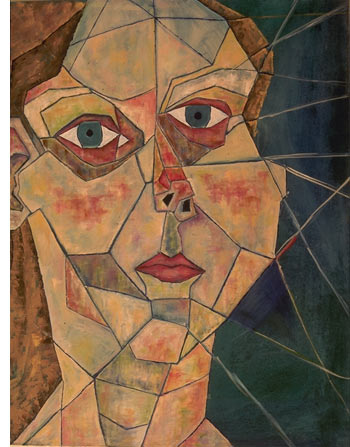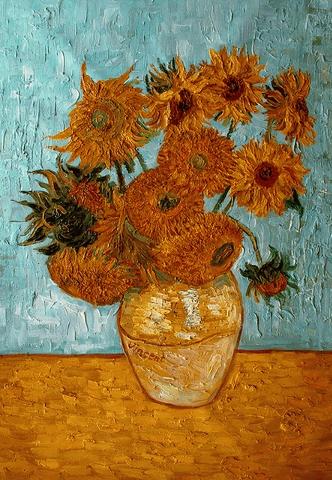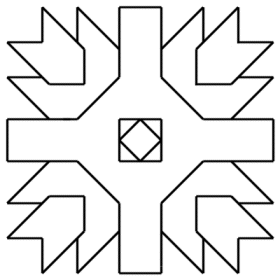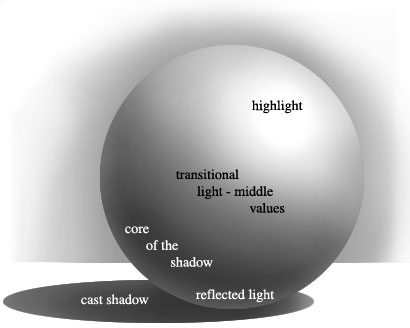5th Grade Art Exam: Trivia Quiz!
.jpg)
.
- 1.
Which answer is an example of COMPLIMENTARY COLORS?
- A.
Red and Green
- B.
Red and Blue
- C.
Red and Yellow
Correct Answer
A. Red and GreenExplanation
Complimentary Colors are ACROSS from each other on the color wheel. When placed next to each other, they look VERY bright (many sports teams use Complimentary Colors)!! I remember this idea by thinking of the color wheel as a dinner table...I like to sit ACROSS from my friend at the table so I can talk to them and compliment them. :-)Rate this question:
-
- 2.
What is the VALUE?
- A.
Goes from dark to light
- B.
Goes from light to dark.
- C.
Both A and B.
Correct Answer
C. Both A and B.Explanation
VALUE (we learned about it during our "Little Big Planet" projects) is shading from DARK TO LIGHT (or LIGHT TO DARK) in order to create a 3D FORM.Rate this question:
-
- 3.
What are COMPLIMENTARY COLORS?
- A.
Colors that sit ACROSS from each other on the Color Wheel.
- B.
Colors that sit NEXT to each other on the Color Wheel
- C.
Ohhhh pretty colors....
Correct Answer
A. Colors that sit ACROSS from each other on the Color Wheel.Explanation
Complimentary Colors are ACROSS from each other on the color wheel. When placed next to each other, they look VERY bright (many sports teams use Complimentary Colors)!! I remember this idea by thinking of the color wheel as a dinner table...I like to sit ACROSS from my friend at the table so I can talk to them and compliment them. :-) The 3 most common sets of "friends" are: RED AND GREEN (Christmas) BLUE AND ORANGE (Syracuse Basketball) YELLOW AND PURPLE (Minnesota Vikings)Rate this question:
-
- 4.
What is this type of picture called?
- A.
A Portrait.
- B.
A Landscape.
- C.
A Still Life.
Correct Answer
B. A Landscape.Explanation
A landscape is exactly what it sounds like. It involves land or water (or a combination of the two)Rate this question:
-
- 5.
What is this type of picture called?
- A.
A Portrait.
- B.
A Landscape.
- C.
A Still Life.
Correct Answer
A. A Portrait.Explanation
A portrait is always of a person or thing. Typically, they are from the armpits up and sitting still. Sometimes you may see a full-body portrait.Rate this question:
-
- 6.
What is this type of picture called?
- A.
A Portrait.
- B.
A Landscape.
- C.
A Still Life.
Correct Answer
C. A Still Life.Explanation
A still-life is just how it sounds - it is basically a bunch of objects sitting STILL.
FUN FACT:
Many years ago, a still life showed the wealth of families. If the objects in the still life painting were very luxurious (such as lace, gold, silver, velvet, rare fruits), it showed that the family was very wealthy.
If the still life contained everyday objects such as apples, grapes, and a glass of water, then it showed that the family was not as wealthy.Rate this question:
-
- 7.
What type of shape is this?
- A.
Good question....
- B.
A Geometric Shape.
- C.
An Organic Shape.
Correct Answer
B. A Geometric Shape.Explanation
Organic Shapes are kind of made-up "blob-like" shapes. They are shapes you might find in nature (like leaves and plants)! Geometric shapes are more rigid. Think of the shapes you might find in Math class or on tracers. Some examples are circles, triangles, squares, rectangles, and more!Rate this question:
-
- 8.
What type of shape is this?
- A.
Good question....
- B.
A Geometric Shape.
- C.
An Organic Shape.
Correct Answer
C. An Organic Shape.Explanation
Organic Shapes are kind of made-up "blob-like" shapes. They are shapes you might find in nature (like leaves and plants)! Geometric shapes are more rigid. Think of the shapes you might find in Math class or on tracers. Some examples are circles, triangles, squares, rectangles, and more!Rate this question:
-
- 9.
What STYLE does this picture best represent?
- A.
Cubism.
- B.
Impressionism.
- C.
Somethingism.
Correct Answer
A. Cubism.Explanation
The correct answer is Cubism. Cubism is an art movement that emerged in the early 20th century, characterized by fragmented and abstract forms. This picture exhibits the key elements of Cubism, such as the multiple perspectives, geometric shapes, and the deconstruction of the subject matter. The use of sharp angles and overlapping shapes in the image further reinforces its association with Cubism.Rate this question:
-
- 10.
What STYLE does this picture best represent?
- A.
Cubism.
- B.
Impressionism.
- C.
Somethingism.
Correct Answer
B. Impressionism.Explanation
The picture is best represented by Impressionism because it captures the essence of the style through its use of loose brushstrokes, emphasis on light and color, and the depiction of a fleeting moment. Impressionism was a movement in art that aimed to convey the impression or sensation of a scene rather than focusing on realistic details. The picture in question seems to align with this approach, as it lacks precise details and instead emphasizes the overall mood and atmosphere through its vibrant and expressive brushwork.Rate this question:
-
- 11.
Say I have a cup full of green paint.... I want to make a TINT of green.... How would I do that?
- A.
Add black.
- B.
Add white.
- C.
Add red.
Correct Answer
B. Add white.Explanation
A TINT is any color plus WHITE.
Example:
Green + white = light green.
A Shade is any color plus BLACK.
Think of the shade under a tree. It's always dark and cool.
Example:
Blue + black = dark blue.Rate this question:
-
- 12.
Say I have a cup full of blue paint.... I want to make a SHADE of blue.... How would I do that?
- A.
Add black.
- B.
Add white.
- C.
Add orange.
Correct Answer
A. Add black.Explanation
A TINT is any color plus WHITE.
Example:
Green + white = light green.
A Shade is any color plus BLACK.
Think of the shade under a tree. It's always dark and cool.
Example:
Blue + black = dark blue.Rate this question:
-
- 13.
A good way to show DEPTH/DISTANCE in a picture is by....
- A.
Making objects in the FOREGROUND big and objects in the BACKGROUND small.
- B.
Use really clear/in focus objects in the BACKGROUND.
- C.
Make objects in the FOREGROUND small.
Correct Answer
A. Making objects in the FOREGROUND big and objects in the BACKGROUND small.Explanation
The FOREGROUND is the part of the picture that is CLOSEST to you....therefore objects should be fairly LARGE and super clear (full of detail).
The BACKGROUND is the part of the picture that is the FARTHEST away from you....therefore objects should be fairly SMALL and out of focus.
Try looking out your bedroom window or a window at school!!Rate this question:
-
- 14.
This picture is a REALLY good example of:
- A.
Asymmetrical balance.
- B.
Symmetrical balance.
- C.
A cool design.
Correct Answer
B. Symmetrical balance.Explanation
The picture is a good example of symmetrical balance because it is divided into two equal halves that mirror each other. The elements on one side of the picture are balanced by the elements on the other side, creating a sense of harmony and equilibrium. This symmetrical arrangement gives the image a sense of stability and order.Rate this question:
-
- 15.
By adding VALUE to a SHAPE, I can create a....
- A.
Circle.
- B.
Form.
- C.
Color.
Correct Answer
B. Form.Explanation
By adding value to a shape, it means giving it depth or three-dimensionality. This can be achieved through shading, highlighting, or using different tones. Adding form to a shape helps to make it appear more realistic and gives it a sense of volume. In contrast, adding color refers to filling the shape with different hues, while a circle is a specific shape that does not require the addition of form. Therefore, the correct answer is form.Rate this question:
-
Quiz Review Timeline +
Our quizzes are rigorously reviewed, monitored and continuously updated by our expert board to maintain accuracy, relevance, and timeliness.
-
Current Version
-
Mar 22, 2023Quiz Edited by
ProProfs Editorial Team -
Mar 02, 2011Quiz Created by
Dstern5
- Accreditation Quizzes
- Advanced Placement Quizzes
- AED Exam Quizzes
- Banking Exam Quizzes
- BISC Exam Quizzes
- CADET Exam Quizzes
- CAE Listening Quizzes
- CHS Exam Quizzes
- Cosmetology State Board Quizzes
- CSAT Quizzes
- CVS Exam Quizzes
- EHR Exam Quizzes
- Engineering Exam Quizzes
- English Exam Quizzes
- Entrance Exam Quizzes
- FSHN Exam Quizzes
- GATE Quizzes
- IGCSE Quizzes
- IT Certification Quizzes
- JEE Exam Quizzes
- Management Exam Quizzes
- Ministerial Exam Quizzes
- OCA Exam Quizzes
- Online Test Quizzes
- Physical Exam Quizzes
- Police Exam Quizzes
- Practice Exam Quizzes
- Prelim Exam Quizzes
- Professional Certification Quizzes
- SNAP Quizzes
- SSC Quizzes
- SSC CGL Quizzes
- UGC NET Exam Quizzes
- UPSC Quizzes
 Back to top
Back to top



